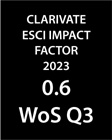University community engagement and proximity – results of an empirical research from Hungary
DOI:
https://doi.org/10.17649/TET.39.3.3645Keywords:
university community engagement, geographical proximity, relational proximity, knowledge transferAbstract
The concept of university community engagement (UCE) is about universities engaging with non-university actors in a way that is mutually beneficial, albeit in different ways, and that enriches the core activities of universities. UCE is closely related to the concept of the third mission, but also substantially different. On the one hand, both concepts (sets of activities) emphasise the cooperation of university actors with actors outside the university. However, while the dominant understanding of the third mission is clearly focused on business-like relationships, UCE focuses explicitly on socially disadvantaged, excluded, resource-poor groups, with an emphasis on promoting social justice and environmental sustainability issues.
So far, however, there is relatively little research on the actual role of UCE in the sustainability transition in the literature (or on its social impact in general), and there is a virtual absence of studies on the territorial aspects of UCE and university social responsibility (USR) in the broader sense. Hungarian research on the above concepts (sets of activities) mainly deals with the concept of USR with a focus on the content of university strategic documents and on university communication through university homepages and online press.
Furthermore, although both local and global scale linkages are included in the theoretical framework of UCE, the actual mechanisms of their operation in the context of geographical and relational proximity have not been explored, despite the key role that both types of proximity play in knowledge sharing, fostering innovation and building collaborations between universities and their partners.
In our study, we draw on this research gap to explore the relationship between UCE and proximity. The research questions we aim to tackle are: What is the impact of (lack of) proximity on UCE processes? How does UCE aXect proximity between participants?
In order to empirically examine our research questions, we use the results of our qualitative research based on semi-structured in-depth individual interviews. We conclude that there is a close relationship between geographical and other forms of proximity in the context of UCE, and that several institutional processes can be identified that work towards increasing the distance between universities and potential UCE partners. All this provides another explanation for the low (Hungarian) uptake of UCE.
Downloads
Published
How to Cite
Issue
Section
License
Copyright (c) 2025 Málovics György, Vas Zsófia

This work is licensed under a Creative Commons Attribution 4.0 International License.
Authors wishing to publish in the journal accept the terms and conditions detailed in the LICENSING TERMS.






